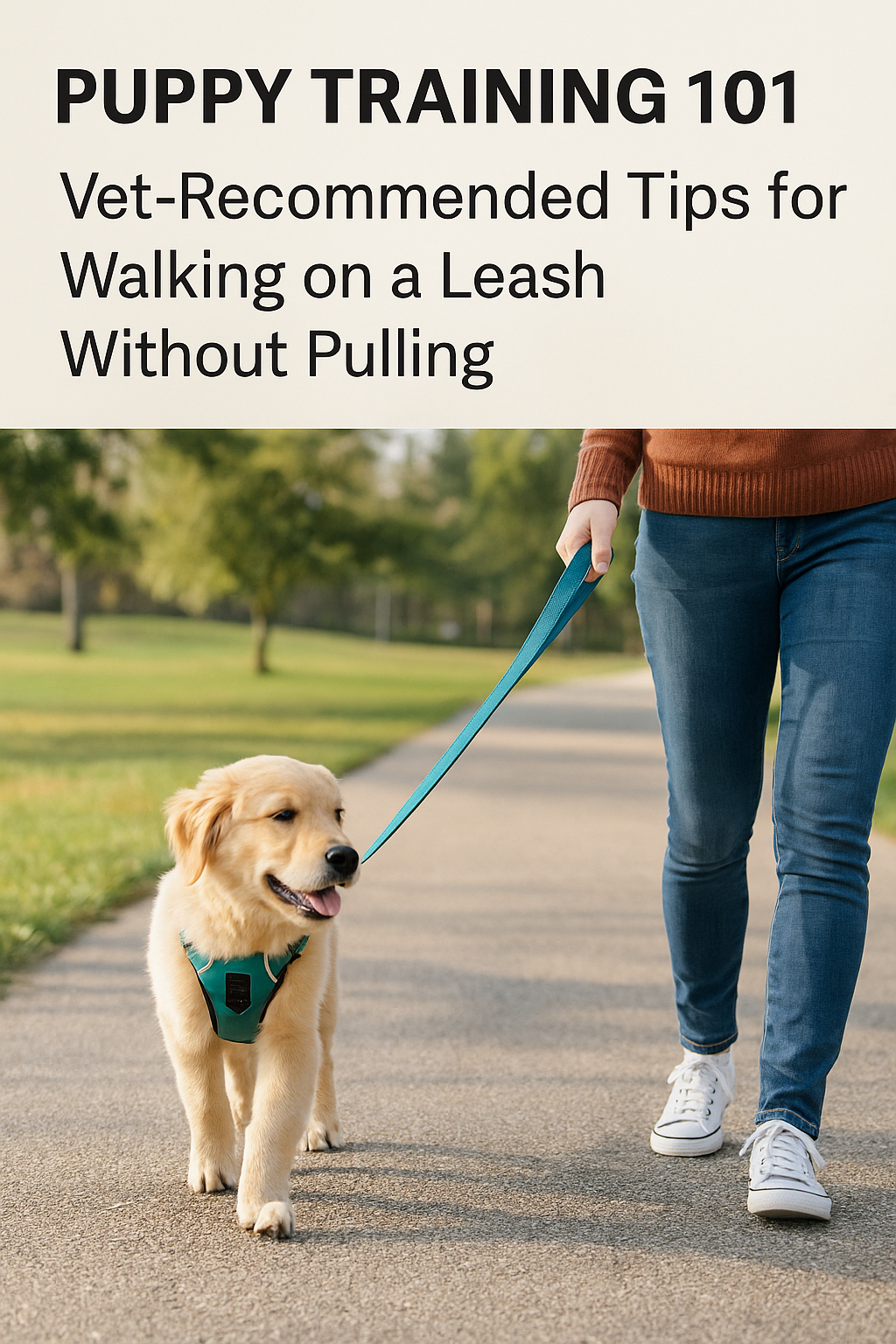Puppy Leash Training 101: Vet-Approved No Pull Tips 2025 🐶🚶♂️

In this article
Puppy Leash Training 101: Vet-Approved No Pull Tips 2025 🐶🚶♂️
By Dr. Duncan Houston BVSc
Teaching your puppy to walk on a leash without pulling is one of the most important (and often most frustrating) parts of early training. But here’s the good news—it’s completely achievable, and the earlier you start, the better.
As a veterinarian and founder of Woopf, I’ve seen firsthand how leash pulling can lead to long-term joint strain, behavior issues, and frustration for both owner and dog. Let’s break it down step-by-step, backed by veterinary research and practical solutions.
Why Do Puppies Pull?
Puppies are curious. The world is full of smells, sounds, and movement—and they want to investigate all of it. But without training, they quickly learn that pulling gets them there faster.
Studies in the Elsevier Journal of Applied Animal Behaviour Science show that leash pulling activates reward systems in a dog’s brain. They feel successful when it gets them what they want. The goal is to reframe that success into walking calmly at your side.
Vet-Approved Tools to Start With
1. A No-Pull Harness
The Woopf Explorer Harness is ideal for puppies. It has a front clip to redirect pulling, padded straps for comfort, and adjustable sizing for growth spurts.
2. A Lightweight Lead
A shorter, lightweight lead (like our Sealskin Lead) provides more control without overwhelming your puppy. Avoid retractables, which teach them they can control the distance.
3. High-Value Treats
Use soft, pea-sized rewards that are easy to dispense frequently. Keep them in the Explorer Dual Pocket Dispenser for training on the go.
Step-by-Step Leash Training Guide
1. Start Indoors
Attach the harness and lead, and let your puppy get used to the feel inside the house. Reward calm behavior and allow them to drag the leash under supervision.
2. Practice “Yes!” and Treat
Walk slowly and wait for your puppy to stay near you. The moment they do, say “Yes!” and reward. This reinforces proximity instead of pulling ahead.
3. Use the Stop-and-Go Method
If your puppy pulls, stop walking. Wait for them to return to your side, then continue. Consistency is key—don’t let them “win” by getting to sniff or run forward while pulling.
4. Add Distractions Gradually
After mastering low-distraction areas, move to your backyard, then the front yard, then a quiet street. Each new environment is an opportunity to reinforce good behavior.
5. Clicker Train for Position
Use a clicker to mark the moment your puppy is walking beside you. Over time, this will become a habit and not just a training cue.
Common Mistakes to Avoid
- Inconsistency between family members
- Switching to a collar too early
- Using a retractable leash
- Yanking or punishing (this increases anxiety and worsens pulling)
PubMed Research: Long-Term Impacts of Pulling
Peer-reviewed studies have shown that dogs trained using positive reinforcement have stronger bonds with their owners and fewer behavioral issues over time. Puppies that pull excessively are more likely to develop joint strain, anxiety, and aggression if not corrected early.
Conclusion
Leash training takes time—but it’s one of the most valuable investments you’ll make in your dog’s life. With the right harness, patience, and positive reinforcement, you’ll build a foundation for stress-free walks that last a lifetime.
Shop Woopf’s Puppy Essentials Today
From adjustable no-pull harnesses to dispenser bags and lightweight leads, Woopf has everything you need to start strong and train smart.



